#gobiiform
Text

Mudskipper
By: Martin Johnson
From: Natural History Magazine
1937
233 notes
·
View notes
Text

Boodart’s Mudskipper (Boleophthalmus boddarti), showing off on the mudflats, family Oxudercidae, order Gobiiformes, The Sunderbands, India
photograph by Agasty Roy Arpita
#mudskipper#boleophthalmus#oxudercidae#bony fish#fish#ichthyology#gobiiformes#india#ocean#animals#nature
941 notes
·
View notes
Text
Taxonomy Tournament: Fish


Synbranchiformes. This order is made up swamp eels, which are eel-like but have spiny rays in their fins.
Gobiiformes. This order is made up of gobies, some of the smallest fish there are.
#animals#biology#polls#poll tournament#zoology#swamp eels#fish#gobies#Synbranchiformes#Gobiiformes#0x3cv0xc3#animal tournament#Animal Tournament Round 1
142 notes
·
View notes
Text
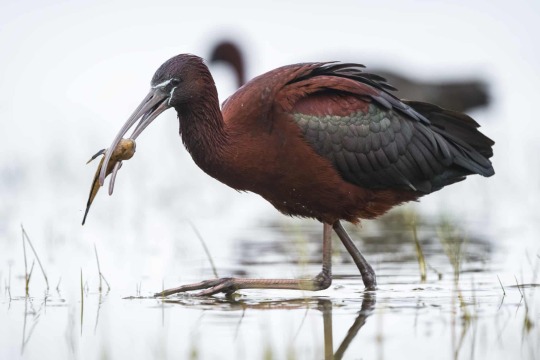
A glossy ibis feeds on the shore of Lake Uluabat in Bursa, Turkey. These birds, which prefer wetlands for feeding and nesting, are characterised by their long, curved beak and dark feathers - Photograph: Anadolu/Getty Images
click image link for more Week in Wildlife photos.
#türkiye#glossy ibis#pelecaniformes#threskiornithidae#plegadis falcinellus#mud skipper#gobiiformes#oxudercinae#wildlife photography
0 notes
Text
Genetic diversity and divergence among native and translocated populations of the golden flathead goby Glossogobius aureus (Gobiiformes: Gobiidae) in Philippine lakes
http://dlvr.it/T0nhQh
0 notes
Photo
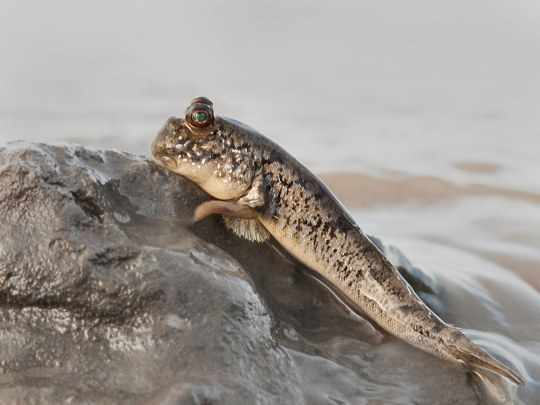

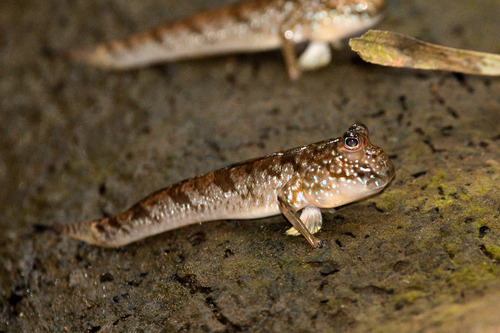

The Atlantic Mudskipper: A Fish Out of Water
Found only along the west African Cost, the Atlantic Mudskipper (Periophthalmus barbarus) is an incredibly unique species of fish. What makes it so special is that, unlike most other fish, the mudskipper can survive on land. It has several adaptations to make it semi-terrestrial. A layer of mucus over the surface of the body allows it to retain moisture, and when on land it can close its gill chambers and breathe through its skin. The eyes are set high on the head and can move independently 360 degrees, giving the Atlantic mudskipper a wide range of vision. Lastly, the pectoral fins that allow it to crawl, climb, and even skip on land, aided by a pair of pelvic fins.
P. Barbarus’ special adaptations allow it to occupy uncommon habitats within its range. It prefers semi-salty brackish water, especially at the mouths of rivers and in mudflats, although they are able to tolerate a range of temperatures and salinity. They can also be found in mangrove forests and lagoons, where they can climb up onto the roots of trees. Along the coast, individuals are most often visible at low tide when they climb up on the shore to feed. In these regions the Atlantic mudskipper digs burrows in which they can hide during high tide. To blend in, they are usually tan to dark brown with dark mottling along the back and bright blue spots on the cheeks.
During the day, the Atlantic mudskipper spends most of its time feeding and defending its territory. They are carnivorous fish, preying on crustaceans, insects, and small fish. The mouth of P. barbarbus is specially shaped so that it covers its prey with water, then sucks the water back up with its accompanying meal. When threatened by terrestrial predators such as shore birds, the Atlantic mudskipper lives up to its name and will ‘skip’ away. These fish also use their mouths in fights, which are quite common. Individuals typically guard of about 1m around their burrow. Males are especially territorial, and will fiercely guard burrows and mates from competitors. Despite their ferocity, Atlantic mudskippers are not very large; most only grow to be 14-16cm long.
Mating occurs year round, although peak times are between February and May. Males engage in territorial displays, after which females will select a male and enter his burrow to lay eggs. Clutches can easily number in the thousands, although few survive to adulthood. The male guards the burrow and, after a brief incubation period, floods it to induce hatching. Larvae drift for 1-2 months before metamorphosing into a juvenile stage, at which time they begin to return to land. Individuals reach sexual maturity at about 10.2-10.8 cm in length, roughly 1 year after hatching, and can live up to 5 years in the wild.
Conservation status: The IUCN rates the Atlantic mudskipper as Least Concern, although populations are declining. Their primary threats are from over-fishing and by-catch, pollution, and urban development. Some areas within their region have instituted sustainable fishing practices and established protected reserves as part of conservation efforts for this species.
Photos
Eva Mártensson
Eric Verhagen
Pedro Martins (via iNaturalist)
Rogerio Ferriera
#atlantic mudskipper#Gobiiformes#Oxudercidae#mudskippers#gobies#fish#Ray-Finned Fish#bony fish#wetlands#wetland fish#rivers#river fish#intertidal fauna#intertidal fish#coral reefs#coral reef fish#atlantic ocean#africa#west africa#animal facts#biology#zoology
149 notes
·
View notes
Photo

Michel’s ghost goby (Pleurosicya micheli)
Photo by Klaus Stiefel
#michel's ghost goby#ghost goby#pleurosicya micheli#pleurosicya#gobiinae#gobiidae#gobiiformes#gobiomopharia#percomorpha#acanthomorpha#neoteleostei#euteleostei#teleostei#neopterygii#actinopterygii#osteichthyes#vertebrata#chordata
66 notes
·
View notes
Text
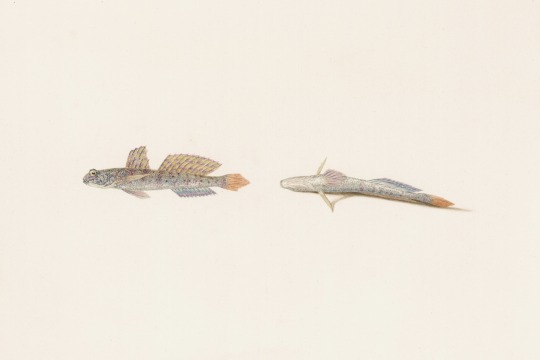

Goby, Favonigobius (1801) - Ferdinand Bauer
#Wonder Rooms#Cabinet of Curiosities#Public Domain#19th Century#Natural History#Scientific Illustration#Ferdinand Bauer#Zoology#Animalia#Fishes#Actinopterygii#Gobiiformes#Gobiidae#Favonigobius
19 notes
·
View notes
Text
Did you know?
Goby is a common name for many species of small to medium sized ray-finned fish, normally with large heads and tapered bodies, which are found in marine, brackish and freshwater environments. Traditionally most of the species called gobies have been classified in the order Perciformes as the suborder Gobioidei, but in the 5th Edition of Fishes of the World this suborder is elevated to an order Gobiiformes within the clade Percomorpha.
Not all the species in the Gobiiformes are referred to as gobies and the "true gobies" are placed in the family Gobiidae, while other species referred to as gobies have been placed in the Oxudercidae. Goby is also used to describe some species which are not classified within the order Gobiiformes, such as the engineer goby or convict blenny Pholidichthys leucotaenia.
The word goby derives from the Latin gobius meaning "gudgeon", and some species of goby, especially the sleeper gobies in the family Eleotridae and some of the dartfishes are called "gudgeons", especially in Australia.
(Info)
57 notes
·
View notes
Text
Animal Crossing Fish - Explained #19
Brought to you by a marine biologist still working on these freshwater dudes...
Fish I’ve Covered: Click Here
Hey, all! We’re covering the Freshwater Goby today for no other reason than...I’m a loose cannon right now. Please feel free to send in requests for fish you like from Animal Crossing: New Horizons!

Look, I played New Leaf and even then when I caught the freshwater goby, I didn’t think it really was a goby. Gobies, as I know them from the ocean, are way more refined, with cigar-shaped bodies, long dorsal and anal fins, and they live in, ya know, the gd ocean. I’ve owned a freshwater goby before, but even he looked like his cousins from the ocean more than this thing. So, what is it? Well, turns out, it’s related to gobies, but not exactly closely and it has a really interesting super power it shares with lots of bottom-dwelling fish.
So, yeah, this thing is and isn’t a Goby. Kind of like the Bass (but not nearly as horrendous) lots of things are called “Goby”. True gobies are any one of the 2,000 species in the Family Gobiidae - all the fish here have fused pelvic fins that they use to do goby things, like adhering to rocks and coral and fish tank walls. The freshwater goby in Animal Crossing isn’t one of these gobies, but rather a more primitive lineage within the Order Gobiiformes called “freshwater sleepers”. The specific species in Animal Crossing? The Dark Sleeper, Odontobutis obscura:
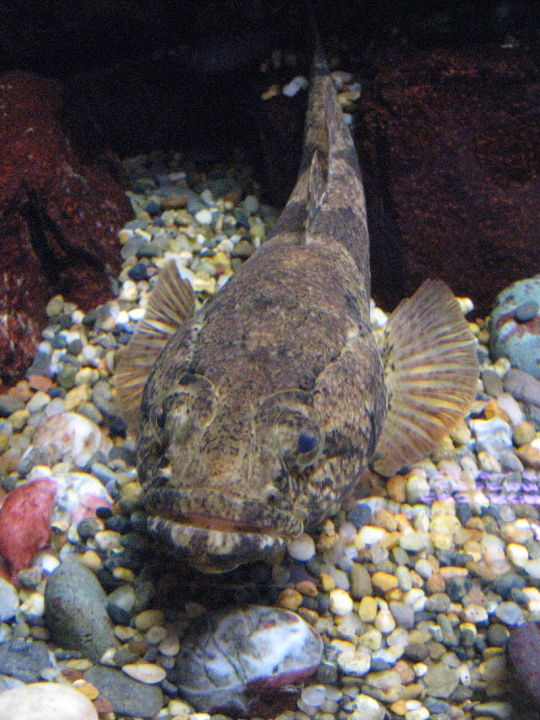
The Dark Sleeper can reach lengths of over 9 inches (25 cm), so it’s pretty damn big for a goby, all things considered. Like lots of fish in AC, this species is native to Japan, particularly the main island of Honshu. Like other gobiiformes, it lacks a gas bladder of any kind and so must make a living on the river bottom.
Like a lot of bottom-dwelling fish, it has coloration to match the back drop of the river bed, but it also has color-changing abilities! They have special chromatophores, or pigment-containing cells, in their skin called iridophores that are reflective. Iridophores reflect light to give an iridescent shine using plates of crystalline guanine. For this particular species, the iridophores are MOTILE, meaning they can move around within cells with hormonal and nervous control. So, that’s pretty nuts. What’s more intriguing is that my sources don’t have a reason as to why this is, although it’s probably for communication and camo.
And there you have it. Fascinating stuff, no?
#animal crossing#ac: new horizons#fish#freshwater goby#science in video games#animal crossing fish explained
20 notes
·
View notes
Text

Leopard-spotted goby
By: Douglas P. Wilson
From: The Fascinating Secrets of Oceans & Islands
1972
#goby#gobiiform#bony fish#fish#1972#1970s#Douglas P. Wilson#The Fascinating Secrets of Oceans & Islands
53 notes
·
View notes
Text
Taxonomy Tournament: Fish

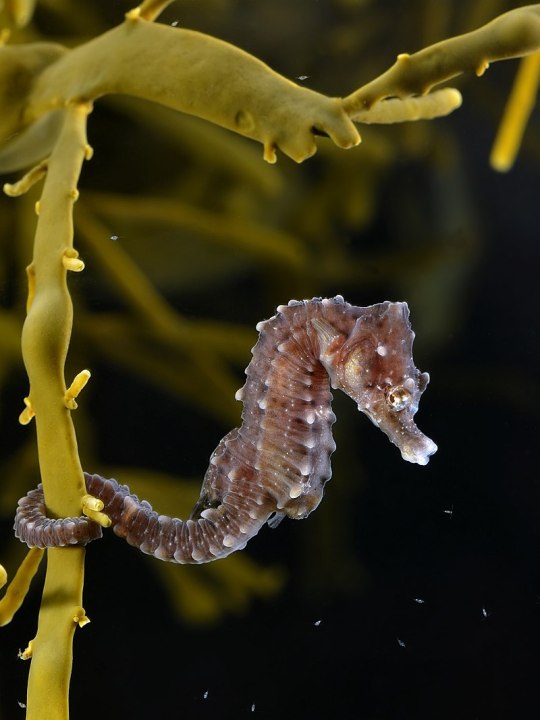
Gobiiformes. This order is made up of gobies, some of the smallest fish there are, including the Mudskipper, which can breathe air and is one of the only fish that can blink.
Syngnathiformes. This order is made up of fish with long narrow bodies, with some groups swimming with their bodies aligned vertically to blend in with seaweed. Examples include the seahorse, trumpet fish, and sea moths.
#animals#biology#polls#poll tournament#zoology#gobies#mudskippers#fish#seahorses#trumpet fish#Gobiiformes#Syngnathiformes#0x3cv0x43
26 notes
·
View notes
Text
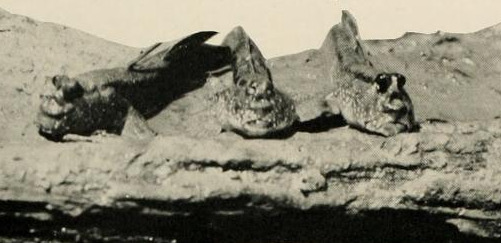
Mudskipper
By: Martin Johnson
From: Natural History Magazine
1937
35 notes
·
View notes
Text

Rock goby
By: Hervé Chaumeton / Jacana Press Agency
From: Éditions Rencontre Cards
1976
#rock goby#goby#gobiiform#bony fish#fish#1976#1970s#Hervé Chaumeton#Jacana Press Agency#Éditions Rencontre Cards
99 notes
·
View notes
Text

Stargazer goby and burrow-digging shrimp sharing a burrow
By: R. Chesher
From: The Complete Encyclopedia of the Animal World
1980
#goby#gobiiform#bony fish#fish#shrimp#crustacean#arthropod#invertebrate#1980#1980s#R. Chesher#The Complete Encyclopedia of the Animal World (1980)
25 notes
·
View notes
Text

Blind goby, A: Young fish with functional eyes, B: Adult fish that has lost its eyes
By: Unknown photographer
From: Natural History of Marine Animals
1949
24 notes
·
View notes